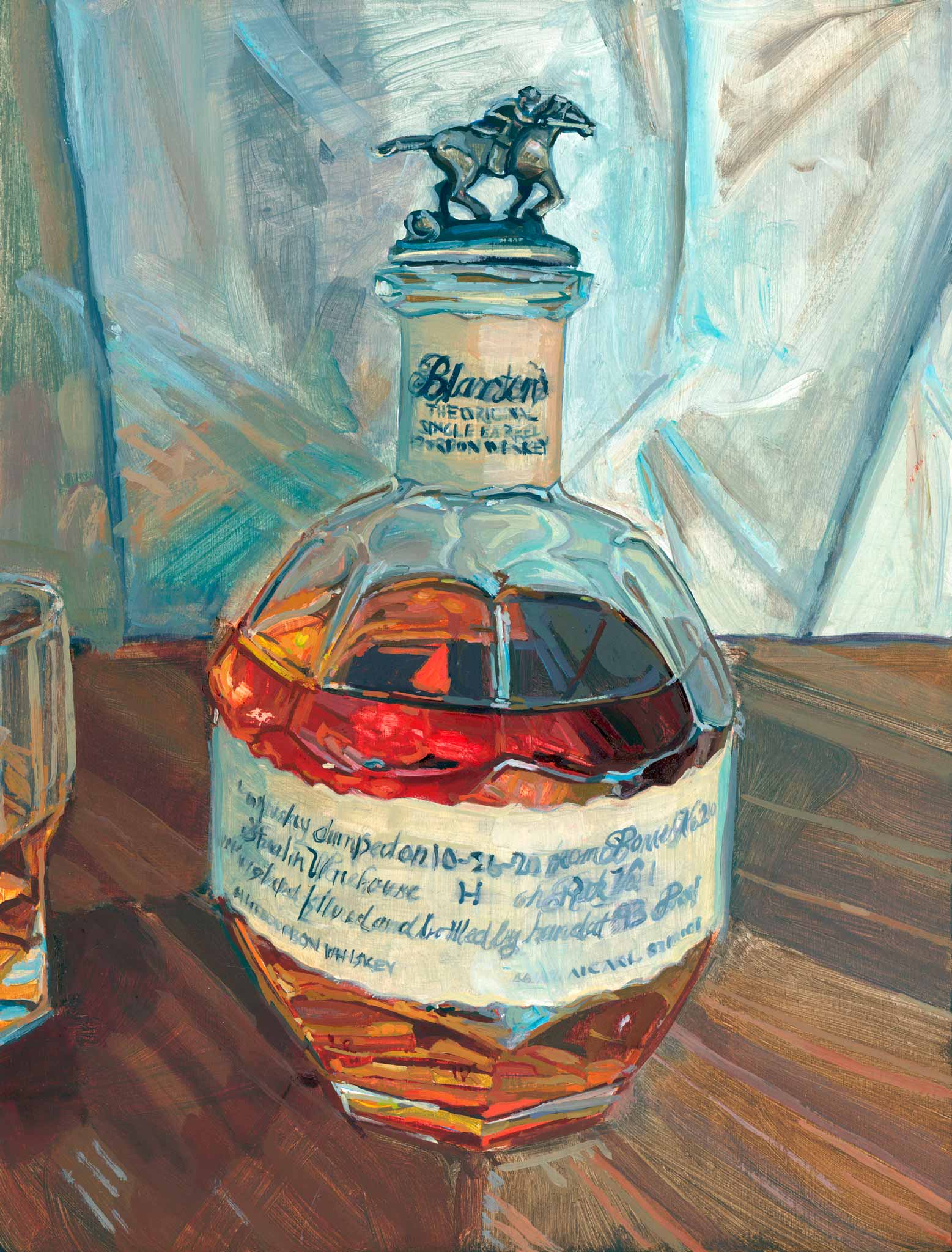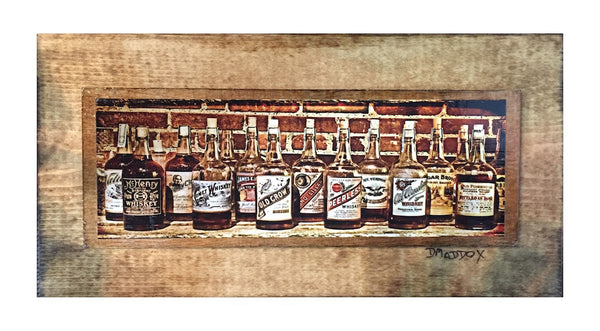Limited Edition Bourbon Art: Why Collectors Are Flocking to One-of-a-kind Finds
Limited Edition Bourbon Art: Why Collectors Are Flocking to One-of-a-kind Finds
Blog Article
The Relevance of Whiskey Art in Celebrating Heritage and Workmanship in the Beverage Sector
The elaborate partnership in between whiskey art and the party of heritage and craftsmanship within the beverage industry can not be overemphasized. Through attentively designed containers and tags, bourbon brands encapsulate their historical origins and the artisanal skills that define their production techniques.
The Historic Roots of Whiskey
At the heart of scotch's allure lies a rich tapestry of historic origins that map back to old human beings. The beginnings of bourbon can be linked to the distillation practices of the Sumerians and Babylonians around 2000 BCE, where early kinds of fermented grain drinks began to emerge. It was in the Center Ages that the art of purification developed dramatically, particularly in Ireland and Scotland, leading to the production of bourbon as we know it today.
The term "bourbon" itself originates from the Gaelic word "uisce beatha," suggesting "water of life." This phrase highlights the social significance of scotch in Celtic cultures, where it was commonly connected with routines, parties, and communal bonding. By the 15th century, distillation became a recognized craft within monastic communities, leading the way for the facility of lawful distilleries.
As profession paths increased, bourbon's appeal grew, going beyond local limits and recording the rate of interest of aficionados worldwide. Whiskey Art. This historic journey shows not only the workmanship behind whiskey manufacturing but likewise its essential function in social and social contexts, marking it as a substantial beverage throughout history
Artistic Expression in Branding
Bourbon branding stands as an engaging junction of virtuosity and business, where aesthetic identity plays a critical function in shaping consumer assumption. The appearances of scotch labels, product packaging, and advertising products mirror not just the brand name's tale but likewise its core values and heritage. Through imaginative expression, distilleries share a story that resonates with customers, stimulating emotions and sparking links.
Using shade, typography, and images in branding offers to separate items in a saturated market. Typical themes may stimulate a sense of credibility and craftsmanship, while modern styles can represent advancement and forward-thinking. This critical imaginative instructions enhances brand name recognition and commitment, permitting consumers to forge an individual partnership with the scotch they pick.
Moreover, artistic expression in branding often acts as a celebration of regional heritage. Distilleries frequently include neighborhood signs or historic referrals right into their designs, producing a sense of location that invites customers to take part in a more comprehensive social experience. Eventually, the virtuosity behind whiskey branding not just enhances aesthetic appeal however also enriches the overall narrative of the brand name, cultivating a deeper appreciation for the workmanship and heritage embedded in each bottle.
Craftsmanship in Container Layout
The creativity obvious in scotch branding prolongs past visual identification to incorporate the craftsmanship associated with container design. Each container acts as a vessel not just for the spirit within, but likewise for the visit this site right here tale it informs concerning its high quality, tradition, and beginning. The style process needs meticulous attention to detail, as aspects such as closure, product, and shape contribute dramatically to the overall assumption of the bourbon.
Craftsmanship in container layout includes picking top notch glass that can enhance the scotch's shade and clearness, while additionally giving a responsive experience for the consumer. click now The silhouette of the bottle need to be both functional and aesthetically attractive, usually mirroring the heritage of the brand name. Lots of distilleries choose one-of-a-kind forms or embossed logo designs that evoke a sense of credibility and background.
Additionally, the label design and typography play a critical role in communicating the brand's narrative. Realism Art. A well-crafted container not just captivates the consumer's eye but additionally reinforces the brand's commitment to high quality and custom. This way, the craftsmanship of bottle layout comes to be a crucial facet of the whiskey experience, merging virtuosity with an extensive respect for heritage
Cultural Relevance of Bourbon Art
Celebrating tradition and workmanship, the cultural significance of whiskey art transcends plain aesthetics, intertwining with the historic and social narratives of the areas where it comes from. Each bottle offers as a canvas, illustrating the one-of-a-kind stories, mythology, and customs that have actually formed neighborhood whiskey-making practices. The elaborate styles commonly show the heritage of the distillers, including icons and themes that reverberate with the culture and values of their areas.

Furthermore, whiskey art plays an essential function in public gatherings and celebrations, functioning as a tangible link in between individuals and their shared experiences. By valuing the creativity in whiskey product packaging, consumers cultivate a much deeper understanding and respect for the craft, inevitably improving their pleasure of the beverage itself.
Modern Trends in Scotch Presentation
In recent times, the discussion of whiskey has evolved to reflect contemporary tastes and fads while still honoring standard workmanship - Whiskey Art. Distilleries are significantly concentrating on visual aspects that boost the total alcohol consumption experience, connecting the space in between heritage and modernity
Ingenious container layouts have arised, commonly integrating lasting products and artistic labels that tell engaging stories. Lots of brands now collaborate with regional musicians, instilling their products with distinct visual expressions that reverberate with consumers. In addition, limited-edition releases are usually packaged in collectible containers, including worth and charm for connoisseurs.

Verdict
In click here now conclusion, bourbon art offers as an essential channel for revealing the heritage and craftsmanship integral in the beverage sector. Via intricate branding, ingenious bottle designs, and culturally significant creative elements, scotch brands successfully recognize their traditions and connect with consumers.


Craftsmanship in container style includes picking high-grade glass that can improve the scotch's color and clarity, while additionally giving a tactile experience for the customer. In this means, the craftsmanship of bottle style becomes a vital element of the whiskey experience, combining virtuosity with an extensive regard for heritage.
In conclusion, bourbon art serves as a crucial channel for revealing the heritage and craftsmanship intrinsic in the beverage market.
Report this page